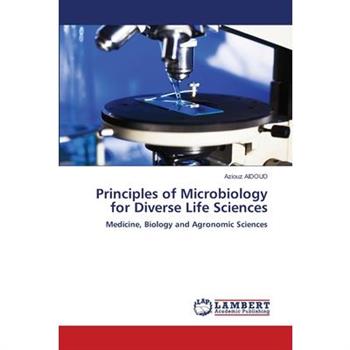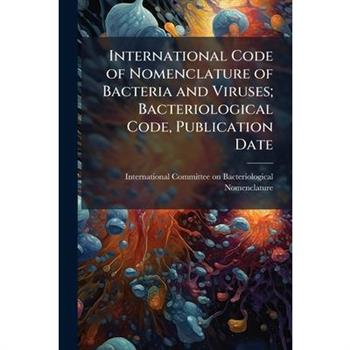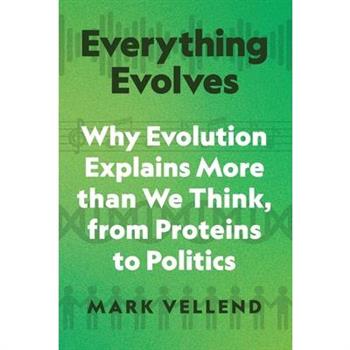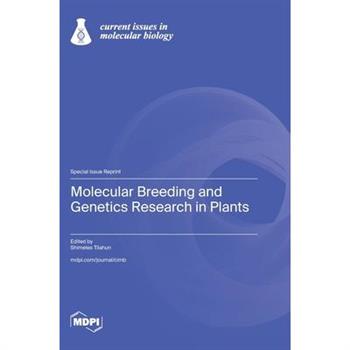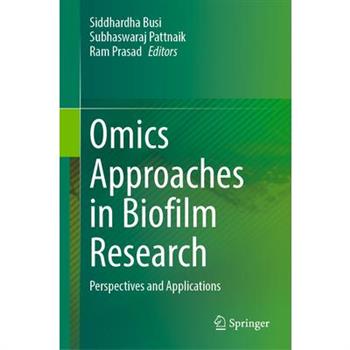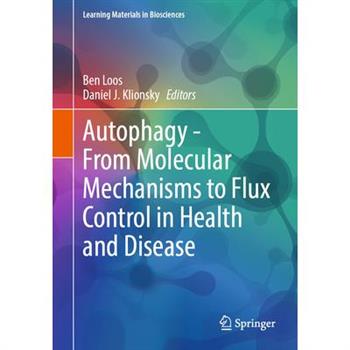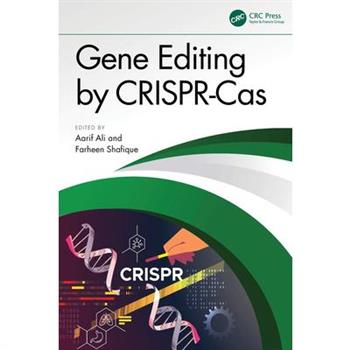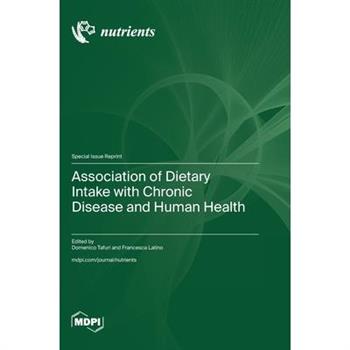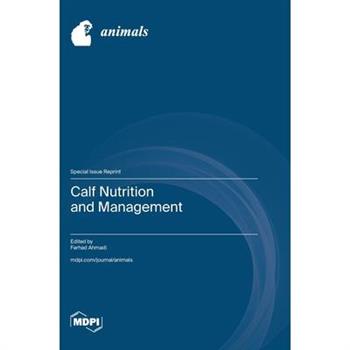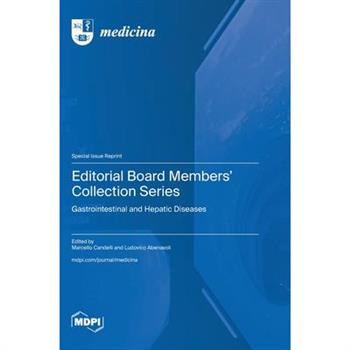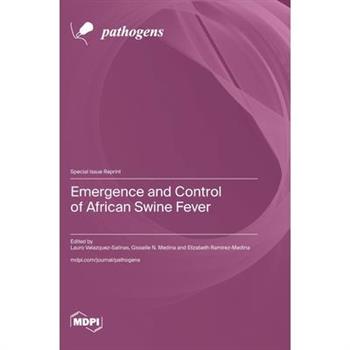Importance Of The Mutation Theory In Practical Breeding
"Importance Of The Mutation Theory In Practical Breeding" explores the application of mutation theory to enhance agricultural practices. Written by George Harrison Shull, this work delves into the genetic principles underlying mutation and their practical implications for plant breeding. The book examines how understanding mutation can lead to the development of new and improved crop varieties, offering insights into increasing yields, enhancing disease resistance, and adapting crops to changing environmental conditions. It bridges the gap between theoretical genetics and real-world agricultural applications, making it a valuable resource for researchers, breeders, and students in the field.This work has been selected by scholars as being culturally important, and is part of the knowledge base of civilization as we know it. This work was reproduced from the original artifact, and remains as true to the original work as possible. Therefore, you will see the original copyright references, library stamps (as most of these works have been housed in our most important libraries around the world), and other notations in the work.This work is in the public domain in the United States of America, and possibly other nations. Within the United States, you may freely copy and distribute this work, as no entity (individual or corporate) has a copyright on the body of the work.As a reproduction of a historical artifact, this work may contain missing or blurred pages, poor pictures, errant marks, etc. Scholars believe, and we concur, that this work is important enough to be preserved, reproduced, and made generally available to the public. We appreciate your support of the preservation process, and thank you for being an important part of keeping this knowledge alive and relevant.
Evolution--a Menace
"Evolution--a Menace" presents a critical examination of evolutionary theory, likely written from a perspective that challenges its scientific validity or its implications for religious belief. This work delves into the core tenets of evolution, scrutinizing its impact on science, religion, and society. Readers interested in the intersection of science and religion, particularly those seeking alternative viewpoints on the origins of life and the universe, will find this book thought-provoking. It offers a historical perspective on the debates surrounding evolution and may provide insights into the ongoing dialogue between scientific and theological interpretations of the natural world. The book is positioned to appeal to those studying the history of science, religious studies, or the evolution versus creationism debate.This work has been selected by scholars as being culturally important, and is part of the knowledge base of civilization as we know it. This work was reproduced from the original artifact, and remains as true to the original work as possible. Therefore, you will see the original copyright references, library stamps (as most of these works have been housed in our most important libraries around the world), and other notations in the work.This work is in the public domain in the United States of America, and possibly other nations. Within the United States, you may freely copy and distribute this work, as no entity (individual or corporate) has a copyright on the body of the work.As a reproduction of a historical artifact, this work may contain missing or blurred pages, poor pictures, errant marks, etc. Scholars believe, and we concur, that this work is important enough to be preserved, reproduced, and made generally available to the public. We appreciate your support of the preservation process, and thank you for being an important part of keeping this knowledge alive and relevant.
On Force And Matter In Relation To Organization
"On Force And Matter In Relation To Organization: An Introductory Lecture To A Course On Physiology" presents Arthur Gamgee's perspective on the fundamental relationship between force, matter, and living organisms. Gamgee, a prominent physiologist, delivers an insightful discourse on the nature of life and the physical and chemical processes that underpin it. This lecture offers a valuable glimpse into the scientific thought of the late 19th century, addressing the vitalistic and mechanistic viewpoints prevalent at the time. Gamgee's work provides historical context for understanding the development of physiology and its connections to broader scientific and philosophical debates. It remains relevant for scholars interested in the history of science, the philosophy of biology, and the evolution of ideas about the nature of life.This work has been selected by scholars as being culturally important, and is part of the knowledge base of civilization as we know it. This work was reproduced from the original artifact, and remains as true to the original work as possible. Therefore, you will see the original copyright references, library stamps (as most of these works have been housed in our most important libraries around the world), and other notations in the work.This work is in the public domain in the United States of America, and possibly other nations. Within the United States, you may freely copy and distribute this work, as no entity (individual or corporate) has a copyright on the body of the work.As a reproduction of a historical artifact, this work may contain missing or blurred pages, poor pictures, errant marks, etc. Scholars believe, and we concur, that this work is important enough to be preserved, reproduced, and made generally available to the public. We appreciate your support of the preservation process, and thank you for being an important part of keeping this knowledge alive and relevant.
Plankton Investigations Of The Danish Lakes, Volumes 1-2
Explore the microscopic world of Danish lakes in this comprehensive two-volume study, "Plankton Investigations Of The Danish Lakes, Volumes 1-2", by Carl Wesenberg-Lund. This detailed work delves into the diverse plankton populations inhabiting these unique aquatic ecosystems. From identifying various species to analyzing their ecological roles, Wesenberg-Lund provides invaluable insights into the intricate dynamics of lake plankton. Perfect for biologists, ecologists, and anyone fascinated by aquatic life, this book offers a deep dive into the often-overlooked realm of plankton and their importance in maintaining the health and balance of freshwater environments. Discover the pioneering research that has shaped our understanding of lake ecology and the critical role plankton play within it.This work has been selected by scholars as being culturally important, and is part of the knowledge base of civilization as we know it. This work was reproduced from the original artifact, and remains as true to the original work as possible. Therefore, you will see the original copyright references, library stamps (as most of these works have been housed in our most important libraries around the world), and other notations in the work.This work is in the public domain in the United States of America, and possibly other nations. Within the United States, you may freely copy and distribute this work, as no entity (individual or corporate) has a copyright on the body of the work.As a reproduction of a historical artifact, this work may contain missing or blurred pages, poor pictures, errant marks, etc. Scholars believe, and we concur, that this work is important enough to be preserved, reproduced, and made generally available to the public. We appreciate your support of the preservation process, and thank you for being an important part of keeping this knowledge alive and relevant.
Plankton Investigations Of The Danish Lakes, Volumes 1-2
Explore the microscopic world of Danish lakes in this comprehensive two-volume study, "Plankton Investigations Of The Danish Lakes, Volumes 1-2", by Carl Wesenberg-Lund. This detailed work delves into the diverse plankton populations inhabiting these unique aquatic ecosystems. From identifying various species to analyzing their ecological roles, Wesenberg-Lund provides invaluable insights into the intricate dynamics of lake plankton. Perfect for biologists, ecologists, and anyone fascinated by aquatic life, this book offers a deep dive into the often-overlooked realm of plankton and their importance in maintaining the health and balance of freshwater environments. Discover the pioneering research that has shaped our understanding of lake ecology and the critical role plankton play within it.This work has been selected by scholars as being culturally important, and is part of the knowledge base of civilization as we know it. This work was reproduced from the original artifact, and remains as true to the original work as possible. Therefore, you will see the original copyright references, library stamps (as most of these works have been housed in our most important libraries around the world), and other notations in the work.This work is in the public domain in the United States of America, and possibly other nations. Within the United States, you may freely copy and distribute this work, as no entity (individual or corporate) has a copyright on the body of the work.As a reproduction of a historical artifact, this work may contain missing or blurred pages, poor pictures, errant marks, etc. Scholars believe, and we concur, that this work is important enough to be preserved, reproduced, and made generally available to the public. We appreciate your support of the preservation process, and thank you for being an important part of keeping this knowledge alive and relevant.
Evolution--a Menace
"Evolution--a Menace" presents a critical examination of evolutionary theory, likely written from a perspective that challenges its scientific validity or its implications for religious belief. This work delves into the core tenets of evolution, scrutinizing its impact on science, religion, and society. Readers interested in the intersection of science and religion, particularly those seeking alternative viewpoints on the origins of life and the universe, will find this book thought-provoking. It offers a historical perspective on the debates surrounding evolution and may provide insights into the ongoing dialogue between scientific and theological interpretations of the natural world. The book is positioned to appeal to those studying the history of science, religious studies, or the evolution versus creationism debate.This work has been selected by scholars as being culturally important, and is part of the knowledge base of civilization as we know it. This work was reproduced from the original artifact, and remains as true to the original work as possible. Therefore, you will see the original copyright references, library stamps (as most of these works have been housed in our most important libraries around the world), and other notations in the work.This work is in the public domain in the United States of America, and possibly other nations. Within the United States, you may freely copy and distribute this work, as no entity (individual or corporate) has a copyright on the body of the work.As a reproduction of a historical artifact, this work may contain missing or blurred pages, poor pictures, errant marks, etc. Scholars believe, and we concur, that this work is important enough to be preserved, reproduced, and made generally available to the public. We appreciate your support of the preservation process, and thank you for being an important part of keeping this knowledge alive and relevant.
The Marine Microbial Food Web
An authoritative and up-to-date exploration of how the competition-defence trade-off has shaped the marine microbial food web In The Marine Microbial Food Web: Competition and Defence as Shaping Forces from Ecosystem to Genes, distinguished researcher Tron Frede Thingstad delivers an insightful and practical discussion of the microbial portion of the ocean's food web. The author describes how specific factors, including evolution, biodiversity, organism life strategies, genome organization, biogeochemistry, food web structure, and population dynamics, can be understood as the consequences of the balance between competition and defence. Using modular idealized mathematical models developed from classical Lotka-Volterra formulations, the book describes models that explain the balance between production and consumption of organic material in the photic zone and the potential for export to the ocean's interior. It also explains how the models are relevant to contemporary climate change and a variety of other modern applications. Readers will also find: A thorough explanation of why the pathogenicity of many "L-strategists" probably originated as coincidental evolution from originally evolved mechanisms for predator defence Comprehensive explorations of to the role of the marine microbial food web in ocean biogeochemistry and production Practical discussions of simple mathematical models of competition, defence, trade-off, and fitness Fulsome treatments of a wide range of organization levels, including individual cells and larger communities of organisms Perfect for researchers, students, and instructors of marine ecology, marine microbiology, and microbial oceanography, The Marine Microbial Food Web will also prove invaluable to limnologists, oceanographers, and students with an interest in applied mathematics.
Principles of Microbiology for Diverse Life Sciences
Tailored for students in medicine, biology, and agronomic sciences, this foundational microbiology text explores the microbial world-covering its history, ecological significance, and comparative biology of prokaryotic and eukaryotic cells. It details bacterial cell structure (morphology, Gram-stained cell wall, membrane, cytoplasm, chromosome/plasmids, pili, capsule, flagella, spores), classification systems (phenetic, phylogenetic, Berge's), nutritional requirements (elements, growth factors, trophic types), growth parameters (temperature, pH, oxygen, water activity), growth kinetics (measurement, batch culture), cultivation methods, and antimicrobial agents. The content integrates core principles with applications relevant to health, environmental, and agricultural contexts.
The Origin and Nature of Life
"The Origin and Nature of Life" by Benjamin Moore explores the scientific understanding of life's beginnings and its fundamental characteristics. Originally published in the early 20th century, this work delves into the biological and chemical processes that underpin living organisms, offering insights into the prevailing scientific thought of the time. Moore examines the distinction between living and non-living matter, considering the role of energy, environment, and complex molecular structures. This book provides a valuable historical perspective on the study of life, reflecting early attempts to unravel the mysteries of existence. It will appeal to readers interested in the history of science, biology, and the ongoing quest to understand the origins of life on Earth.This work has been selected by scholars as being culturally important, and is part of the knowledge base of civilization as we know it. This work was reproduced from the original artifact, and remains as true to the original work as possible. Therefore, you will see the original copyright references, library stamps (as most of these works have been housed in our most important libraries around the world), and other notations in the work.This work is in the public domain in the United States of America, and possibly other nations. Within the United States, you may freely copy and distribute this work, as no entity (individual or corporate) has a copyright on the body of the work.As a reproduction of a historical artifact, this work may contain missing or blurred pages, poor pictures, errant marks, etc. Scholars believe, and we concur, that this work is important enough to be preserved, reproduced, and made generally available to the public. We appreciate your support of the preservation process, and thank you for being an important part of keeping this knowledge alive and relevant.
Human Cloning And Embryonic Stem Cell Research After Seoul; Examination Exploitation, Fraud And Ethical Problems In The Research
The BiblioGov Project is an effort to expand awareness of the public documents and records of the U.S. Government via print publications. In broadening the public understanding of government and its work, an enlightened democracy can grow and prosper. Ranging from historic Congressional Bills to the most recent Budget of the United States Government, the BiblioGov Project spans a wealth of government information. These works are now made available through an environmentally friendly, print-on-demand basis, using only what is necessary to meet the required demands of an interested public. We invite you to learn of the records of the U.S. Government, heightening the knowledge and debate that can lead from such publications.This work has been selected by scholars as being culturally important, and is part of the knowledge base of civilization as we know it. This work was reproduced from the original artifact, and remains as true to the original work as possible. Therefore, you will see the original copyright references, library stamps (as most of these works have been housed in our most important libraries around the world), and other notations in the work.This work is in the public domain in the United States of America, and possibly other nations. Within the United States, you may freely copy and distribute this work, as no entity (individual or corporate) has a copyright on the body of the work.As a reproduction of a historical artifact, this work may contain missing or blurred pages, poor pictures, errant marks, etc. Scholars believe, and we concur, that this work is important enough to be preserved, reproduced, and made generally available to the public. We appreciate your support of the preservation process, and thank you for being an important part of keeping this knowledge alive and relevant.
A Symposium on Respiratory Enzymes
"A Symposium on Respiratory Enzymes" presents a detailed exploration of respiratory enzymes and the biological action of vitamins. Compiled from contributions by leading researchers at the University of Wisconsin and the University of Chicago, including Otto Meyerhof, this volume captures a critical moment in the development of biochemistry and physiology. The discussions delve into the intricate mechanisms of enzymes involved in respiration, offering insights into their structure, function, and interaction with vitamins. This work is an invaluable resource for historians of science, biochemists, and anyone interested in the foundations of modern enzymology and the study of metabolic processes. It provides a snapshot of the scientific discourse and experimental approaches of the era, making it a significant addition to collections focused on the history of biochemistry and molecular biology.This work has been selected by scholars as being culturally important, and is part of the knowledge base of civilization as we know it. This work was reproduced from the original artifact, and remains as true to the original work as possible. Therefore, you will see the original copyright references, library stamps (as most of these works have been housed in our most important libraries around the world), and other notations in the work.This work is in the public domain in the United States of America, and possibly other nations. Within the United States, you may freely copy and distribute this work, as no entity (individual or corporate) has a copyright on the body of the work.As a reproduction of a historical artifact, this work may contain missing or blurred pages, poor pictures, errant marks, etc. Scholars believe, and we concur, that this work is important enough to be preserved, reproduced, and made generally available to the public. We appreciate your support of the preservation process, and thank you for being an important part of keeping this knowledge alive and relevant.
Sex in Microorganisms; a Symposium Presented on December 30, 1951, at the Philadelphia Meeting of the American Association for the Advancement of Science
"Sex in Microorganisms" presents the proceedings of a symposium held on December 30, 1951, at the Philadelphia meeting of the American Association for the Advancement of Science. This collection of papers explores the then-current understanding of sexual processes in microorganisms. Featuring contributions from leading scientists of the time, the book offers insights into early research in microbial genetics and cell biology. While the field has advanced significantly since its original publication, this volume remains a valuable historical resource for those interested in the development of microbiology and the study of genetic exchange in simple organisms. It provides a fascinating glimpse into the scientific questions and methodologies that shaped our current knowledge.This work has been selected by scholars as being culturally important, and is part of the knowledge base of civilization as we know it. This work was reproduced from the original artifact, and remains as true to the original work as possible. Therefore, you will see the original copyright references, library stamps (as most of these works have been housed in our most important libraries around the world), and other notations in the work.This work is in the public domain in the United States of America, and possibly other nations. Within the United States, you may freely copy and distribute this work, as no entity (individual or corporate) has a copyright on the body of the work.As a reproduction of a historical artifact, this work may contain missing or blurred pages, poor pictures, errant marks, etc. Scholars believe, and we concur, that this work is important enough to be preserved, reproduced, and made generally available to the public. We appreciate your support of the preservation process, and thank you for being an important part of keeping this knowledge alive and relevant.
Cell Physiology and Pharmacology
Cell Physiology and Pharmacology explores the fundamental principles governing the functions of living cells and the influence of pharmacological agents on these processes. This work by J.F. Danielli delves into the intricate mechanisms that dictate cellular behavior and how drugs interact with cells to produce specific effects. With a focus on physiological and pharmacological concepts, this book offers an in-depth examination of cellular functions and drug actions. This text provides valuable insights into the complex interplay between cells and pharmacological substances. Though written in 1949, the foundational principles explored provide essential context for understanding modern advances in cell biology and pharmacology. It is suitable for students and researchers seeking to establish a robust understanding of cell physiology and the mechanisms by which drugs exert their effects.This work has been selected by scholars as being culturally important, and is part of the knowledge base of civilization as we know it. This work was reproduced from the original artifact, and remains as true to the original work as possible. Therefore, you will see the original copyright references, library stamps (as most of these works have been housed in our most important libraries around the world), and other notations in the work.This work is in the public domain in the United States of America, and possibly other nations. Within the United States, you may freely copy and distribute this work, as no entity (individual or corporate) has a copyright on the body of the work.As a reproduction of a historical artifact, this work may contain missing or blurred pages, poor pictures, errant marks, etc. Scholars believe, and we concur, that this work is important enough to be preserved, reproduced, and made generally available to the public. We appreciate your support of the preservation process, and thank you for being an important part of keeping this knowledge alive and relevant.
Brachyuran Crabs of Porto Rico and the Virgin Islands Volume v.15, pt.1
A detailed study of brachyuran crabs found in Porto Rico and the Virgin Islands, originally published in 1932. This volume, "Brachyuran Crabs of Porto Rico and the Virgin Islands Volume v.15, pt.1", provides an extensive overview of crab species in the region. Authored by Mary Jane Rathbun, a prominent zoologist specializing in crustaceans, the work offers valuable insights into the classification, morphology, and distribution of these marine creatures.Researchers, marine biologists, and anyone interested in the natural history of the Caribbean will find this volume an indispensable resource. Rathbun's meticulous descriptions and taxonomic work remain relevant for contemporary studies of biodiversity and marine ecosystems.This work has been selected by scholars as being culturally important, and is part of the knowledge base of civilization as we know it. This work was reproduced from the original artifact, and remains as true to the original work as possible. Therefore, you will see the original copyright references, library stamps (as most of these works have been housed in our most important libraries around the world), and other notations in the work.This work is in the public domain in the United States of America, and possibly other nations. Within the United States, you may freely copy and distribute this work, as no entity (individual or corporate) has a copyright on the body of the work.As a reproduction of a historical artifact, this work may contain missing or blurred pages, poor pictures, errant marks, etc. Scholars believe, and we concur, that this work is important enough to be preserved, reproduced, and made generally available to the public. We appreciate your support of the preservation process, and thank you for being an important part of keeping this knowledge alive and relevant.
Is Evolution ProvedA Debate Between Douglas Dewar
Explore the intricate and enduring debate surrounding the theory of evolution in "Is Evolution Proved: A Debate Between Douglas Dewar." This book delves into a historical discussion of evolutionary science, exploring arguments for and against the central tenets of Darwinism. H.S. Shelton presents a comprehensive examination of the scientific evidence and philosophical implications that shaped the understanding of evolution in the mid-20th century.This work offers readers a unique opportunity to engage with the historical context of scientific debates and to understand the complexities of reconciling scientific theories with broader worldviews. A valuable resource for anyone interested in the history of science, the philosophy of biology, and the ongoing dialogue between science and religion.This work has been selected by scholars as being culturally important, and is part of the knowledge base of civilization as we know it. This work was reproduced from the original artifact, and remains as true to the original work as possible. Therefore, you will see the original copyright references, library stamps (as most of these works have been housed in our most important libraries around the world), and other notations in the work.This work is in the public domain in the United States of America, and possibly other nations. Within the United States, you may freely copy and distribute this work, as no entity (individual or corporate) has a copyright on the body of the work.As a reproduction of a historical artifact, this work may contain missing or blurred pages, poor pictures, errant marks, etc. Scholars believe, and we concur, that this work is important enough to be preserved, reproduced, and made generally available to the public. We appreciate your support of the preservation process, and thank you for being an important part of keeping this knowledge alive and relevant.
The Nautilus
"The Nautilus" (33-34), published by the American Malacological Union, explores the fascinating world of mollusks and marine life. This volume offers insights into the study of shells and their natural history. A valuable resource for both amateur enthusiasts and professional researchers, "The Nautilus" provides a detailed look at the diverse species within this biological class. It is an essential addition to any collection focusing on marine biology and natural history.This work has been selected by scholars as being culturally important, and is part of the knowledge base of civilization as we know it. This work was reproduced from the original artifact, and remains as true to the original work as possible. Therefore, you will see the original copyright references, library stamps (as most of these works have been housed in our most important libraries around the world), and other notations in the work.This work is in the public domain in the United States of America, and possibly other nations. Within the United States, you may freely copy and distribute this work, as no entity (individual or corporate) has a copyright on the body of the work.As a reproduction of a historical artifact, this work may contain missing or blurred pages, poor pictures, errant marks, etc. Scholars believe, and we concur, that this work is important enough to be preserved, reproduced, and made generally available to the public. We appreciate your support of the preservation process, and thank you for being an important part of keeping this knowledge alive and relevant.
Heredity And Evolution
"Heredity And Evolution" explores the fundamental principles governing the transmission of traits from parents to offspring and the processes driving the adaptation and diversification of life. Delving into the mechanisms of inheritance, this book elucidates the roles of genes and chromosomes in shaping the characteristics of organisms across generations. The book further investigates the forces of natural selection, genetic drift, and mutation, demonstrating how these factors contribute to evolutionary change over time. This accessible study is essential for anyone seeking a comprehensive understanding of how living organisms adapt to their environments and the intricate interplay between heredity and evolution.This work has been selected by scholars as being culturally important, and is part of the knowledge base of civilization as we know it. This work was reproduced from the original artifact, and remains as true to the original work as possible. Therefore, you will see the original copyright references, library stamps (as most of these works have been housed in our most important libraries around the world), and other notations in the work.This work is in the public domain in the United States of America, and possibly other nations. Within the United States, you may freely copy and distribute this work, as no entity (individual or corporate) has a copyright on the body of the work.As a reproduction of a historical artifact, this work may contain missing or blurred pages, poor pictures, errant marks, etc. Scholars believe, and we concur, that this work is important enough to be preserved, reproduced, and made generally available to the public. We appreciate your support of the preservation process, and thank you for being an important part of keeping this knowledge alive and relevant.
The Science and Philosophy of the Organism
"The Science and Philosophy of the Organism" presents Hans Driesch's Gifford Lectures delivered at Aberdeen University in 1907-1908. Driesch, a prominent biologist and philosopher, explores his theory of vitalism, challenging mechanistic explanations of life processes. Focusing on morphogenesis and the development of organisms, Driesch argues for the existence of non-material factors that guide biological development.These lectures delve into the philosophical implications of biological research, examining the limitations of purely physical and chemical explanations. This work remains a significant contribution to the philosophy of science, offering insights into the enduring debate between vitalism and mechanism in understanding the nature of life.This work has been selected by scholars as being culturally important, and is part of the knowledge base of civilization as we know it. This work was reproduced from the original artifact, and remains as true to the original work as possible. Therefore, you will see the original copyright references, library stamps (as most of these works have been housed in our most important libraries around the world), and other notations in the work.This work is in the public domain in the United States of America, and possibly other nations. Within the United States, you may freely copy and distribute this work, as no entity (individual or corporate) has a copyright on the body of the work.As a reproduction of a historical artifact, this work may contain missing or blurred pages, poor pictures, errant marks, etc. Scholars believe, and we concur, that this work is important enough to be preserved, reproduced, and made generally available to the public. We appreciate your support of the preservation process, and thank you for being an important part of keeping this knowledge alive and relevant.
Body-build and its Inheritance
"Body-build and its Inheritance" (1923) by Charles Benedict Davenport explores the scientific understanding of human physical variation and its genetic basis in the early 20th century. Davenport, a prominent biologist and eugenicist, examines the inheritance of body types and physical characteristics. This work reflects the scientific trends and perspectives of its time, offering insights into the study of human anatomy, genetics, and heredity. While some of the ideas presented are now considered outdated or controversial, the book remains a valuable historical document, illustrating the development of scientific thought on human diversity and inheritance.This work has been selected by scholars as being culturally important, and is part of the knowledge base of civilization as we know it. This work was reproduced from the original artifact, and remains as true to the original work as possible. Therefore, you will see the original copyright references, library stamps (as most of these works have been housed in our most important libraries around the world), and other notations in the work.This work is in the public domain in the United States of America, and possibly other nations. Within the United States, you may freely copy and distribute this work, as no entity (individual or corporate) has a copyright on the body of the work.As a reproduction of a historical artifact, this work may contain missing or blurred pages, poor pictures, errant marks, etc. Scholars believe, and we concur, that this work is important enough to be preserved, reproduced, and made generally available to the public. We appreciate your support of the preservation process, and thank you for being an important part of keeping this knowledge alive and relevant.
Human Cloning And Embryonic Stem Cell Research After Seoul; Examination Exploitation, Fraud And Ethical Problems In The Research
The BiblioGov Project is an effort to expand awareness of the public documents and records of the U.S. Government via print publications. In broadening the public understanding of government and its work, an enlightened democracy can grow and prosper. Ranging from historic Congressional Bills to the most recent Budget of the United States Government, the BiblioGov Project spans a wealth of government information. These works are now made available through an environmentally friendly, print-on-demand basis, using only what is necessary to meet the required demands of an interested public. We invite you to learn of the records of the U.S. Government, heightening the knowledge and debate that can lead from such publications.This work has been selected by scholars as being culturally important, and is part of the knowledge base of civilization as we know it. This work was reproduced from the original artifact, and remains as true to the original work as possible. Therefore, you will see the original copyright references, library stamps (as most of these works have been housed in our most important libraries around the world), and other notations in the work.This work is in the public domain in the United States of America, and possibly other nations. Within the United States, you may freely copy and distribute this work, as no entity (individual or corporate) has a copyright on the body of the work.As a reproduction of a historical artifact, this work may contain missing or blurred pages, poor pictures, errant marks, etc. Scholars believe, and we concur, that this work is important enough to be preserved, reproduced, and made generally available to the public. We appreciate your support of the preservation process, and thank you for being an important part of keeping this knowledge alive and relevant.
Nitrification In Soils And In Solutions
"Nitrification In Soils And In Solutions" (1909) examines the microbial processes by which ammonia is converted to nitrite and then to nitrate in soil and liquid environments. This early work in soil microbiology provides insights into the bacteria responsible for nitrification, the conditions affecting the process, and its significance in agriculture and environmental science. F.L. Stevens presents detailed observations and experimental results, offering a foundational understanding of nitrification for researchers, students, and practitioners interested in the historical development of soil science and bacteriology.This work has been selected by scholars as being culturally important, and is part of the knowledge base of civilization as we know it. This work was reproduced from the original artifact, and remains as true to the original work as possible. Therefore, you will see the original copyright references, library stamps (as most of these works have been housed in our most important libraries around the world), and other notations in the work.This work is in the public domain in the United States of America, and possibly other nations. Within the United States, you may freely copy and distribute this work, as no entity (individual or corporate) has a copyright on the body of the work.As a reproduction of a historical artifact, this work may contain missing or blurred pages, poor pictures, errant marks, etc. Scholars believe, and we concur, that this work is important enough to be preserved, reproduced, and made generally available to the public. We appreciate your support of the preservation process, and thank you for being an important part of keeping this knowledge alive and relevant.
International Code of Nomenclature of Bacteria and Viruses; Bacteriological Code, Publication Date
This volume presents the "International Code of Nomenclature of Bacteria and Viruses," also known as the Bacteriological Code, as of its publication date in June 1958. Authored by the International Committee on Bacteriological Nomenclature, this document establishes the rules and recommendations governing the naming of bacterial and viral species. It provides a standardized framework crucial for clarity and consistency in scientific communication and research. This historical document is essential for researchers, historians of science, and legal scholars interested in the development of scientific standards and the evolution of biological classification. It offers valuable insights into the processes by which scientific consensus is achieved and formalized, with enduring relevance to modern bacteriological and virological studies.This work has been selected by scholars as being culturally important, and is part of the knowledge base of civilization as we know it. This work was reproduced from the original artifact, and remains as true to the original work as possible. Therefore, you will see the original copyright references, library stamps (as most of these works have been housed in our most important libraries around the world), and other notations in the work.This work is in the public domain in the United States of America, and possibly other nations. Within the United States, you may freely copy and distribute this work, as no entity (individual or corporate) has a copyright on the body of the work.As a reproduction of a historical artifact, this work may contain missing or blurred pages, poor pictures, errant marks, etc. Scholars believe, and we concur, that this work is important enough to be preserved, reproduced, and made generally available to the public. We appreciate your support of the preservation process, and thank you for being an important part of keeping this knowledge alive and relevant.
Experimental Biology
"Experimental Biology" by Richard W. Van Norman, likely from 1962, offers a comprehensive introduction to conducting experiments in the life sciences. This text explores the fundamental principles of the scientific method and its application to biological research. The book likely provides detailed guidance on designing experiments, collecting and analyzing data, and interpreting results. Readers interested in gaining practical experience in the laboratory will find this book a valuable resource. It probably covers a range of experimental techniques and protocols essential for understanding biological processes and phenomena. A classic text for students and researchers seeking to develop their skills in experimental design and analysis.This work has been selected by scholars as being culturally important, and is part of the knowledge base of civilization as we know it. This work was reproduced from the original artifact, and remains as true to the original work as possible. Therefore, you will see the original copyright references, library stamps (as most of these works have been housed in our most important libraries around the world), and other notations in the work.This work is in the public domain in the United States of America, and possibly other nations. Within the United States, you may freely copy and distribute this work, as no entity (individual or corporate) has a copyright on the body of the work.As a reproduction of a historical artifact, this work may contain missing or blurred pages, poor pictures, errant marks, etc. Scholars believe, and we concur, that this work is important enough to be preserved, reproduced, and made generally available to the public. We appreciate your support of the preservation process, and thank you for being an important part of keeping this knowledge alive and relevant.
Haemoglobin; a Symposium Based on a Conference Held at Cambridge in June 1948 in Memory of Sir Joseph Barcroft
"Haemoglobin; a Symposium Based on a Conference Held at Cambridge in June 1948 in Memory of Sir Joseph Barcroft" presents a comprehensive exploration of hemoglobin, the vital protein responsible for oxygen transport in the blood. Compiled from the proceedings of a conference held in Cambridge, this volume features contributions from leading scientists and researchers of the era. The book delves into the biochemical properties, physiological functions, and clinical significance of hemoglobin. It offers insights into the structure and behavior of hemoglobin under various conditions. This symposium serves as a historical record of the state of knowledge on hemoglobin at a pivotal time in the development of modern biochemistry and molecular biology, honoring the legacy of Sir Joseph Barcroft's pioneering work in respiratory physiology.This work has been selected by scholars as being culturally important, and is part of the knowledge base of civilization as we know it. This work was reproduced from the original artifact, and remains as true to the original work as possible. Therefore, you will see the original copyright references, library stamps (as most of these works have been housed in our most important libraries around the world), and other notations in the work.This work is in the public domain in the United States of America, and possibly other nations. Within the United States, you may freely copy and distribute this work, as no entity (individual or corporate) has a copyright on the body of the work.As a reproduction of a historical artifact, this work may contain missing or blurred pages, poor pictures, errant marks, etc. Scholars believe, and we concur, that this work is important enough to be preserved, reproduced, and made generally available to the public. We appreciate your support of the preservation process, and thank you for being an important part of keeping this knowledge alive and relevant.
Inheritance in Lettuce
"Inheritance in Lettuce" explores the genetic inheritance patterns observed in lettuce plants. Authored by Charles Elmer Durst, this scientific work delves into the complexities of plant genetics, providing valuable insights into the hereditary traits of lettuce. This book is an essential resource for botanists, agricultural scientists, and anyone interested in plant breeding and genetic research. It offers a detailed examination of the genetic factors that influence various characteristics of lettuce, contributing to a deeper understanding of plant heredity and evolution.This work has been selected by scholars as being culturally important, and is part of the knowledge base of civilization as we know it. This work was reproduced from the original artifact, and remains as true to the original work as possible. Therefore, you will see the original copyright references, library stamps (as most of these works have been housed in our most important libraries around the world), and other notations in the work.This work is in the public domain in the United States of America, and possibly other nations. Within the United States, you may freely copy and distribute this work, as no entity (individual or corporate) has a copyright on the body of the work.As a reproduction of a historical artifact, this work may contain missing or blurred pages, poor pictures, errant marks, etc. Scholars believe, and we concur, that this work is important enough to be preserved, reproduced, and made generally available to the public. We appreciate your support of the preservation process, and thank you for being an important part of keeping this knowledge alive and relevant.
The Next Species
We are at the crossroads of the next evolutionary leap. It could be an inevitable odyssey we have to take in a short while. It could be a symbiotic merging with the intelligent machines we are creating, or it could be a strife between biological and digital intelligence. A glimpse back at the past is an essential requisite for navigating the future. This book explores how we evolved from an accidental protein to the exalted human species through the processes of natural selection and rejection, collectively known as 'evolution, ' spanning the past 3.5 to 4 billion years. It examines how various life forms evolved and how we transformed from our ape-like ancestors into self-aware, intelligent, and beautiful humans. Evolution appears to favour increased beauty and intelligence in all living things. This non-fiction book, 'The Next Species: Beyond DNA.', explores the exciting/frightening possibilities for the future of humanity. I've made every effort to present these ideas in a way that is accessible to everyone. That said, some academic terms might have slipped in here and there. It is hard to avoid entirely. The topics are arranged in a logical, step-by-step order, but feel free to skip a chapter or section if you find it too technical. The goal is for you to enjoy the journey and grasp the bigger picture. We have surpassed nature and taken control of our evolutionary saga through advances in genetic engineering and nanotechnology. At the same time, digital technology is making us more and more dependent on computers, mobile devices, and the internet. AI is projected to surpass human intelligence in a few years. One of the challenges our species faces is whether super-intelligent machines will dominate the world, rendering humans subservient. What kind of morality and ethics, these machines adopt if at all they develop consciousness? This book aims to reflect on the future of humanity in this super-fast developing technology, with a discussion on the opinions of scientists, philosophers, theologians, teleologists, and others.
Everything Evolves
How the science of evolution explains how everything came to be, from bacteria and blue whales to cell phones, cities, and artificial intelligence Everything Evolves reveals how evolutionary dynamics shape the world as we know it and how we are harnessing the principles of evolution in pursuit of many goals, such as increasing the global food supply and creating artificial intelligence capable of evolving its own solutions to thorny problems. Taking readers on an astonishing journey, Mark Vellend describes how all observable phenomena in the universe can be understood through two sciences. The first is physics. The second is the science of evolvable systems. Vellend shows how this Second Science unifies biology and culture and how evolution gives rise to everything from viruses and giraffes to nation-states, technology, and us. He discusses how the idea of evolution had precedents in areas such as language and economics long before it was made famous by Darwin, and how only by freeing ourselves of the notion that the study of evolution must start with biology can we appreciate the true breadth of evolutionary processes. A sweeping tour of the natural and social sciences, Everything Evolves is an essential introduction to one of the two key pillars to the scientific enterprise and an indispensable guide to understanding some of the most difficult challenges of the Anthropocene.
Animal and Vegetable Physiology
"Animal and Vegetable Physiology" by Peter Mark Roget offers a detailed exploration into the functions and processes of living organisms. Published in 1834, this work provides insights into the biological sciences of the early 19th century, examining the intricacies of both animal and plant life. Roget's systematic approach covers a range of topics, making it a valuable resource for understanding the foundations of modern physiology. Readers interested in the history of science and the development of biological thought will find this book particularly engaging. Roget's meticulous observations and comprehensive analysis reflect the scientific curiosity of his era, offering a glimpse into the knowledge and methodologies of early biological research. This classic text remains relevant for its historical significance and its contribution to the understanding of life sciences.This work has been selected by scholars as being culturally important, and is part of the knowledge base of civilization as we know it. This work was reproduced from the original artifact, and remains as true to the original work as possible. Therefore, you will see the original copyright references, library stamps (as most of these works have been housed in our most important libraries around the world), and other notations in the work.This work is in the public domain in the United States of America, and possibly other nations. Within the United States, you may freely copy and distribute this work, as no entity (individual or corporate) has a copyright on the body of the work.As a reproduction of a historical artifact, this work may contain missing or blurred pages, poor pictures, errant marks, etc. Scholars believe, and we concur, that this work is important enough to be preserved, reproduced, and made generally available to the public. We appreciate your support of the preservation process, and thank you for being an important part of keeping this knowledge alive and relevant.
Animal and Vegetable Physiology
"Animal and Vegetable Physiology" by Peter Mark Roget offers a detailed exploration into the functions and processes of living organisms. Published in 1834, this work provides insights into the biological sciences of the early 19th century, examining the intricacies of both animal and plant life. Roget's systematic approach covers a range of topics, making it a valuable resource for understanding the foundations of modern physiology. Readers interested in the history of science and the development of biological thought will find this book particularly engaging. Roget's meticulous observations and comprehensive analysis reflect the scientific curiosity of his era, offering a glimpse into the knowledge and methodologies of early biological research. This classic text remains relevant for its historical significance and its contribution to the understanding of life sciences.This work has been selected by scholars as being culturally important, and is part of the knowledge base of civilization as we know it. This work was reproduced from the original artifact, and remains as true to the original work as possible. Therefore, you will see the original copyright references, library stamps (as most of these works have been housed in our most important libraries around the world), and other notations in the work.This work is in the public domain in the United States of America, and possibly other nations. Within the United States, you may freely copy and distribute this work, as no entity (individual or corporate) has a copyright on the body of the work.As a reproduction of a historical artifact, this work may contain missing or blurred pages, poor pictures, errant marks, etc. Scholars believe, and we concur, that this work is important enough to be preserved, reproduced, and made generally available to the public. We appreciate your support of the preservation process, and thank you for being an important part of keeping this knowledge alive and relevant.
Molecular Breeding and Genetics Research in Plants
The following Special Issue of Current Issues in Molecular Biology comprises an Editorial and 19 studies highlighting advancements in molecular breeding, genomics, and gene characterization to enhance crop yield, stress tolerance, and disease resistance. Together, these studies offer valuable insights to support sustainable agriculture and cover five key topics: (i) advances in molecular breeding and genetics; (ii) stress tolerance and environmental adaptation; (iii) plant health and resistance to weeds and diseases; (iv) anthocyanin biosynthesis and pigmentation; and (v) specialized functional studies. Collectively, these contributions present innovative findings that advance our understanding of molecular breeding and genetics in plants.
Space Biology and Space Biotechnology
Space Biology and Space Biotechnology provides the reader with a wide-ranging review of space biology and related fields. Topics covered include the space environment, space microbiology, space botany, space hydrobiology, space physiology, space development, space ecology, animal and tissue engineering, space simulation technology, and space pharmaceuticals. Written for professionals in biology and biotechnology, graduate students and post-docs, as well as spaceflight professionals in industry, academia and government, this book covers all the right bases in space biology and biotechnology.
Artificial Intelligence Innovations for Biomedical Engineering and Healthcare
Artificial Intelligence Innovations for Biomedical Engineering and Healthcare bridges the evolving domains of artificial intelligence and biomedical engineering and healthcare. In an era where data-driven insights and precision medicine are essential in healthcare, this book explores emerging trends and showcases AI's potential in transforming patient care, diagnosis, and the treatment of chronic diseases. It simplifies the relationship between artificial intelligence and biomedical engineering, elucidating how these technologies are revolutionizing self-care. The book goes on to examine how advanced technologies, including complex networks and AI-driven diagnostics are reshaping the healthcare landscape. From decoding complex networks to revealing AI's role in treating chronic diseases, this book serves as a guide to understanding how innovation is reshaping the healthcare landscape.
Biotechnological Potential of Ascidians
As blue biotechnology--the application of science and technology to living aquatic organisms for the production of knowledge, goods, and services--is gaining momentum in recent decades, this volume provides needed and the state-of-the-art information on the biotechnological potential of the as-yet understudied world of ascidians (sea squirts) of the different seas and oceans.It covers their biotechnological applications in the production and development of human food and as feed for aquatic farmed animals; for their therapeutic values from natural compounds in medicine; for their production of pure and high-quality cellulose that can be used in industrial products and by-products; for their bioremediating agents against marine pollution; as well as for their uses in bioethanol production.Biotechnological Potential of Ascidians: Wacky and Weird Sea Squirts is a valuable resource for scientists and researchers as well as students and faculty in marine biology and fisheries science as well as for industry professionals looking into exploring new marine sources for the development of food, feed, drugs, fuel, and more.
Enzymes of Polyamine Metabolism
Enzymes of Polyamine Metabolism, Volume 715 highlights new advances in the field, with this new volume presenting interesting chapters on topics such as Convergence of MYC and the hypusine circuits in the control of metabolism, HDAC10 structure and enzymology, TR-FRET Assay for Profiling HDAC10 Inhibitors and PROTACs, Polyamine Transport Inhibitors: Methods and caveats associated with measuring polyamine uptake in mammalian cells, Evaluation of platinum drug toxicity resulting from polyamine catabolism, Measurements of acrolein adducts resulting from polyamine catabolism, Alterations in polyamine metabolism induced by the pathogen Helicobacter pylori: implications for gastric inflammation and carcinogenesis, and much more. Other sections delve into Molecular and biochemical analysis of eIF5A, Analysis of in vivo SMOX activity, Structure and role of ATP13A2 in polyamine transport, Analysis of Translational Regulation Using Polysome Profiling and Puromycin Incorporation, Targeting polyamine metabolism in an ex vivo prostatectomy model, Development and characterization of a Drosophila model of SRS, Monitoring ODC activity and polyamines in Bachmann-Bupp syndrome patient biological samples, Gene replacement therapy to restore polyamine metabolism, Investigation of polyamine metabolism in bone homeostasis, Collection, preparation, and biobanking of clinical specimens for polyamine analysis, and many other topics.
Photodynamic Therapy for the Management of Disease
Advances in medical technology have brought the use of photosensitizing materials and light for treating diverse ailments to a new level, with reduced adverse effects and enhanced therapeutic outcomes. This new book focuses on diffusion optical imaging, a non-invasive imaging technique that allows for real-time visualization of the treatment area, and explores its application for treating patients through various modes. The volume discusses photodynamic treatement for pharmacological intervention, breast cancer diagnosis using biophotonics, photothermal therapy for cancer with gold nanoparticles, photobiomodulation therapy for the brain, with a specific focus on its potential impact on neurodegenerative conditions such as Alzheimer's and Parkinson's disease, and more.
Omics Approaches in Biofilm Research
The increased incidence of microorganisms' selective pressure to traditional antibiotics has led to the emergence of multi-drug resistance (MDR) phenomena and has become a global health issue with a catastrophic influence on millions of lives, as well as the global economy. The inherent tendency of pathogenic microorganisms to infer MDR could be attributed to their ability to form recalcitrant biofilm matrices. The biofilm matrix not only advocates chronic nosocomial infections, but also critically provides protection against environmental stress including antibiotic therapies. Biofilm-mediated MDR has posed a serious challenge to human well-being. Henceforth, it is important to understand the pathophysiology of biofilms and the concomitant development of diagnostic & therapeutic modalities to counteract biofilm-mediated chronic infections.The lack of understanding on biofilm biology has a critical negative influence on diagnostic and therapeutic efforts. Therefore, it is imperative to discover the right course of action to understand biofilm mechanics. The advent of Omics-based approaches has provided a holistic realization to understand biofilm ecology with special reference to the pathophysiological interactions of antibiotic-resistant genes, protein-protein interactions, and response-based interactions with therapeutic agents upon infection. The inherent ability of several Omics-based approaches has provided a comprehensive understanding of biofilm dynamics at various levels of organization such as genes, mRNA, proteins, and their regulation. Omics-based tools such as metagenomics, transcriptomics, proteomics, metabolomics, etc. have provided a new horizon to understand and tackle the biofilm-mediated antibiotic resistance. The integrated approach to consider multi-Omics tools (e.g. genomics, transcriptomics, proteomics, lipidomics, metabolomics, etc.) has further improved our understanding of the mechanisms associated with biofilm resistome profile. The applications of transcriptomics, proteomics, and metabolomics profiles of biofilm matrices could provide new dimensions in relation to the characteristic properties of different ARGs, their relative expression profiles, and their metabolic intervention in biofilm mechanics. Also, advanced integrated Phenomics, Lipidomics, and Culturomics approaches could provide novel avenues to understand the diverse range of biofilm phenotypes, their macromolecular reorganization profiles, and molecular tools for identification of microbial species in the complex biofilm microenvironment. Based on the advancement in omics-based tools, "Omics Approaches in Biofilm Research: Perspectives and Applications" integrates the current knowledge of biofilm microenvironment and innovative strategies to address biofilm mediated drug resistance. This work provides a comprehensive platform to enhance our knowledge, diagnosis and strategies to mitigate biofilms and associated diseases.
Recent Advances and New Challenges in Coupled Systems and Networks
This Special Issue is in honor of Professor Roderick Melnik, who has pioneered many advanced mathematical models and has significantly contributed to this field over the past few decades. This Reprint is dedicated to the recent advancements, developments, and challenges pertaining to the development of current state-of-the-art models focused on mathematical and computational sciences, with their applications in relation to modeling natural, social, and engineering systems. We believe that this Reprint will provide the readers with ample knowledge and lead to the generation of novel ideas for future advancement, pushing the boundaries of knowledge in mathematical and computational sciences and their multifaceted applications.
Gene Editing by CRISPR-Cas
CRISPR-Cas systems have redefined the landscape of genetic engineering, offering an unprecedented level of precision, efficiency, and versatility in genome editing. This book, titled Gene Editing by CRISPR-Cas, provides a comprehensive and well-structured approach on the historical context of genetics and gene-editing techniques leading to the groundbreaking discovery of CRISPR-Cas systems.Distinguished by its multidisciplinary scope, this volume not only delves into CRISPR-Cas systems but also examines alternative and next-generation gene-editing technologies. The book aims to inform and engage both general audience with a keen interest in science and biology, and professionals and students in related fields. By offering a balanced blend of scientific explanations and real-world applications, the book seeks to empower readers to understand the potential of CRISPR technology and its impact across diverse domains, such as medicine, agriculture, biotechnology, and diagnostics, while addressing the ethical, regulatory, and biosafety considerations essential for responsible implementation. Furthermore, this book engages in a discussion on the future directions and broader impacts of CRISPR technologies, providing valuable insights into the evolving landscape of genome engineering and its implications for scientific advancements.Key Features: This book is written in a clear and accessible manner, making complex scientific concepts understandable to a general audience without overwhelming them with technical jargon This book provides a comprehensive exploration of the discovery and evolution of CRISPR technology, delving into the underlying science and its transformative capabilities. It serves as an excellent introduction to both the technical intricacies and the human implications of this groundbreaking technology This book provides an in-depth exploration of the potential uses of CRISPR across multiple domains, with a particular focus on genetic disease treatment, cancer studies, agricultural advancements, HIV, blood disorders, neurological conditions, insect biology, microbial engineering, and both infectious and non-infectious diseases Furthermore, this book also provides critical analysis of bioethics, safety concerns, and regulatory frameworks, providing a responsible perspective on genome editing
Association of Dietary Intake with Chronic Disease and Human Health
Chronic diseases represent one of the most pressing global health challenges, placing an immense burden on individuals and posing significant challenges to healthcare systems. While their development is influenced by multiple factors, an increasing amount of evidence highlights the pivotal role of diet and lifestyle in both prevention and management. Understanding how dietary interventions mitigate chronic conditions is essential for developing effective, sustainable health strategies. A balanced diet is widely recognized as a key factor in reducing the risk of chronic metabolic diseases, offering a sustainable and accessible approach to disease prevention and health promotion. While the etiology of chronic disease is complex, many chronic conditions can be mitigated through lifelong adherence to healthy lifestyle practices. Effective management strategies are inherently multidimensional, integrating dietary interventions, regular physical activity, and broader lifestyle modifications. Among these, nutrition plays a pivotal role as it represents a modifiable risk factor for the onset and progression of numerous chronic diseases, whether occurring as isolated conditions or in comorbid states. This Special Issue garners selected contributions that not only explore the scientific underpinnings of dietary interventions but also emphasize the translation of experimental findings into practical, real-world applications. By bridging scientific research with practical applications, this Special Issue will provide significant insights into the development of evidence-based strategies for chronic disease prevention and management.
Plants, Lichens, Fungi and Algae Ingredients for Nutrition and Health
This Special Issue reveals important information on the possibility of using plant ingredients and by-products to enhance the nutritional and functional value of various staple foods. Furthermore, the use of such ingredients in animal nutrition to achieve superior meat quality will be discussed. This Special Issue highlights the experience of the authors with respect to the utilization of plant ingredients as a sustainable way to enhance the nutritional value of foods, with many benefits such as diminishing nutrient deficiencies, or the manufacture of food for people with dietary requirements such as those with gluten intolerances. The properties of the ingredients used, the manufacturing technologies, and the opportunity to incorporate fruit, vegetable, yeast, and lichen components are key factors for obtaining enriched food products. In addition, current concerns regarding the development of novel food products which exert some health benefits on consumers were also discussed in this Special Issue.
Calf Nutrition and Management
This Reprint aims to provide current information on nutritional and management strategies for optimizing calf health, welfare, and development during early life. This critical stage significantly affects the future health, growth, and productivity of calves and has a lasting impact on the future productivity and the sustainability of dairy systems. Contributions within this Reprint explore the effects of colostrum quality and administration, the use of probiotics and nutraceuticals to support immune function and reduce morbidity, and the role of housing and environmental factors in promoting welfare. A novel model for estimating body weight from morphometric data is also presented, accompanied by a user-friendly tool to facilitate on-farm use. A pilot study highlights how early-life disease influences fecal and nasal microbiome development, revealing that microbial assembly is largely governed by stochastic processes. The effect of dietary fiber and forage particle size under heat stress conditions is additionally examined. Together, these contributions support evidence-based approaches to improve short- and long-term outcomes in calf rearing.
Editorial Board Members' Collection Series
The Special Issue "Editorial Board Members' Collection Series: Gastrointestinal and Hepatic Diseases" is a collection of papers from our Editorial Board Members and researchers invited by them. The aim is to provide a venue for networking and communication between the journal Medicina and scholars in the field of gastrointestinal and hepatic diseases.
Emergence and Control of African Swine Fever
African swine fever (ASF) is a highly lethal and contagious viral disease found in domestic pigs, wild boars, and wild suids, and it has significant economic consequences. This disease is currently endemic in many parts of the world, but the lack of an effective commercial vaccine for prevention and control makes the threat of ASF spreading to ASF-free regions more prominent. Currently, the emergence of a new highly lethal genotype I and II recombinant African swine fever viruses disrupted the ability of available vaccine candidates against genotype II in order to protect pigs against ASF. The emergence of this recombinant virus is an example of the complex dynamics that involve the natural infectious cycle of this pathogen. Currently, more research studies are needed to improve the control of ASF. These collections of studies include the areas of control (vaccination, drugs, disinfectants, and immunology), epidemiology, pathogenesis, and diagnostics. The studies compiled in this Reprint contribute to improving the knowledge of several critical aspects of this complex disease. I encourage the scientific community of ASFV to review these published studies.
Benthic Biodiversity from Microbes to Multicellular Organisms and Its Functional Interplays
This Special Issue explores the assessment of benthic biodiversity, spanning microbes, protists, megafauna, and fish, and its responses to both natural and human-induced drivers. It emphasizes how these communities influence key ecosystem functions such as biogeochemical fluxes and material transport across the seafloor. Despite advances in marine ecology, much of the benthic realm-particularly beyond macrofauna-remains poorly understood. By bringing together observational, experimental, and modeling approaches, this collection provides new insights into the complex dynamics of benthic communities and their reactions to environmental gradients and anthropogenic pressures.
Parasites and Infection
Parasitism is an ecological relationship in which an organism, a parasite, lives inside or on another organism, the host, with the former depending on the latter to acquire shelter and essential nutrients, and survive. Thus, it is a relationship that benefits the parasite at the expense of the host, but does not necessarily result in the host's death. In humans, parasitic diseases hamper development and still cause high mortality, especially in children in developing countries. Parasitic infections in poultry, cattle, or swine, for example, are responsible for economic losses in livestock. Indeed, the proximity to infected animals puts humans at risk of zoonosis. Herein are thirteen publications covering basic biology, genetics, new diagnostic tools and treatments, control strategies, disease epidemiology, and the pathogenesis of protozoan and helminth parasites of medical importance.
Detection, Control, Risk Assessment, and Prevention of Foodborne Microorganisms
Despite sustained efforts by governments and the food industry, enteric foodborne diseases remain a global public health concern, contributing significantly to disease burden and mortality. Although some major pathogens have shown stable incidence rates in recent years, others continue to emerge or increase in prevalence, posing ongoing challenges to food safety systems. Emerging risks are being driven by shifts in consumer behavior, globalization of food trade, advances in processing technologies, and population aging. In a new era of food safety, underpinned by a risk-based approach, omics data and quantitative tools are promising assets to combat enteric foodborne diseases. This Special Issue contains original manuscripts presenting novel approaches for the detection, control, and prevention of enteric foodborne microorganisms. Some manuscripts also combined quantitative and molecular methods to study the emergence and reemergence of foodborne pathogens. Contributions applying quantitative risk assessment approaches, supported by computational tools, to explore microbial food safety issues in greater depth were also welcomed.











